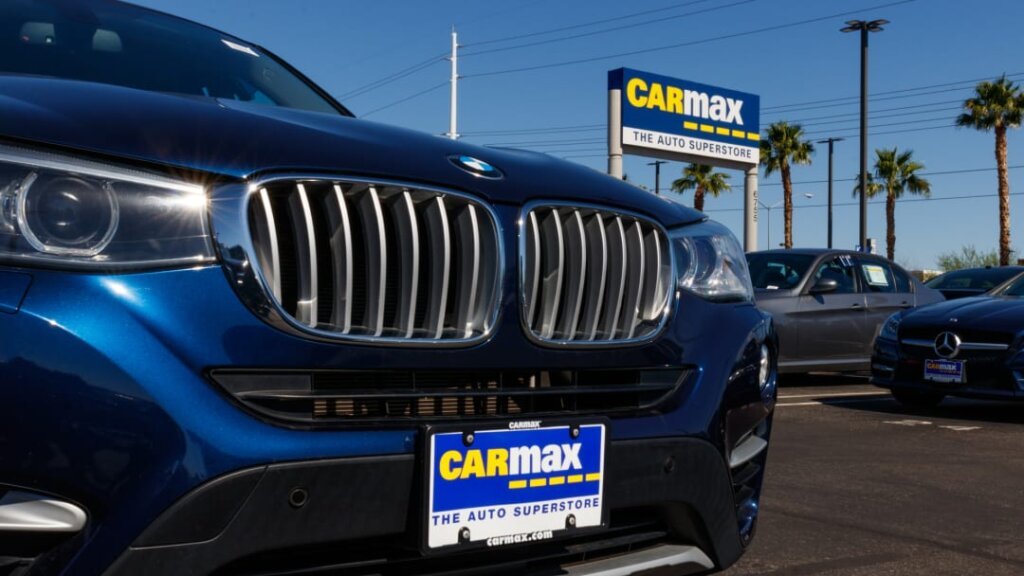CarMax Q2 Earnings Miss Tells Us About The Used Car Market
What CarMax Q2 Earnings Miss tells us about the used car market is a tale of unexpected volatility. Despite several indicators suggesting a robust pre-owned car market, CarMax, one of the largest used car dealers in the U.S., reported a significant quarterly earnings miss for Q2, causing its stock prices to plummet by 25% to $0.64 per share. This surprising downturn raises critical questions about the current trends in pricing, inventory, and demand within the used car sector as the industry heads into Q4.
The Numbers Don’t Seem to Add Up: A Signal of Trouble?
CarMax’s performance is often viewed as a bellwether for the broader automotive market, particularly the used car segment. The company’s Q2 results painted a concerning picture:
- Comparable store unit sales declined by 6.3%, sharply missing Wall Street’s expectation of a 0.7% increase.
- Retail used car sales dipped 5.4%.
- Wholesale unit sales were down 2.2%.
- CarMax purchased 2.4% fewer vehicles from consumers and dealers in Q2 (293,000 units), with 262,000 coming directly from consumers.
- Combined retail and wholesale used vehicle unit sales totaled 338,031, a 4.1% decrease from the prior year’s second quarter.
This significant shortfall, especially following a strong Q1, has left investors and analysts fearing a potential downturn for the used car market in the second half of the year, and possibly signaling broader economic instability.
Financial Details and Management’s Outlook
Financially, the quarter was tough for CarMax:
- Auto financing income decreased by 11.2% to $102.6 million, primarily due to “an increase in the provision for loan losses [outweighing] growth in the net interest margin percentage.”
- Net earnings per share fell to $0.64, a 25% drop from $0.85 in Q2 2024.
- The company did repurchase $180 million in common stock.
- Selling, general, and administrative (SG&A) expenses decreased by 1.6% to $601.1 million, with an additional $150 million in operational overhead reductions planned over the next 18 months, indicating cost-cutting measures.
Despite the challenging quarter, Bill Nash, president and chief executive officer of CarMax, expressed confidence: “While this was a challenging quarter, we remain confident in our long-term strategy and the strength of the earnings model that we have built.”
Why CarMax’s Earnings Are Concerning for the Used Car Market
The sharp reversal from Q1 2025, where CarMax saw an 8.1% increase in comparable store used unit sales and a 9% rise in retail used unit sales, is particularly alarming. This steep decline, especially with year-over-year figures also down, suggests a potential structural problem or a significant shift in the used car market, possibly reflecting:
- Broader Economic Instability: Consumers may be more reluctant to make large purchases due to economic uncertainty, inflationary pressures, or fluctuating interest rates.
- Increased Dealership Competition: Auto dealerships are bolstering their own used car inventories. If their trade-in offers become comparable to CarMax’s, it directly impacts CarMax’s ability to acquire vehicles directly from consumers and maintain its inventory.
- Impact of “Pull-Forward Demand” and Tariffs: CarMax’s previous success in 2025 appeared influenced by “pull-forward demand” – stockpiling goods in anticipation of rising prices, particularly due to tariffs. In its Q1 report, CarMax noted that financing income was affected by “an influx of self-funded, higher credit purchasers seen during the initial announcement of tariffs.”
- Future Economic Headwinds: CarMax itself acknowledged in its Q2 report that “changes in general or regional U.S. economic conditions, including economic downturns, inflationary pressures, fluctuating interest rates, tariffs or the effect of trade policies, and the potential impact of international events” may negatively affect its performance in Q3 and beyond.
These factors paint a cautious outlook for the used car market, suggesting a period of adjustment and potential challenges ahead.
Also Read – Toyota RAV4 Still Outselling Rivals Even As It Nears Replacement: Sales Up 16.9%




Pingback: Cadillac Sales Hit 12-Year High Driven By Lyriq, Optiq EVs & Escalade - Mechhelp